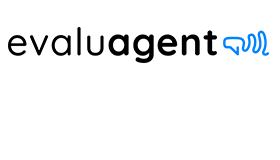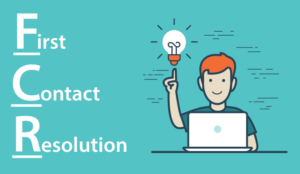What do customers want when they contact your business?
They want their problems solved. They don’t want to wait. And they definitely don’t want to have to contact you again any time soon.
But while first contact resolution (FCR) may seem like a basic fundamental, many companies are still failing to deliver, as our new research in partnership with ContactBabel reveals the disconnect between customer expectations and company capabilities.
Here are three reasons why doubling down on FCR is the best thing you can do for your customers, as well as your business.
1. FCR Reduces Customer Churn
Surveys in both UK and US markets revealed that high FCR was consumers’ top priority when contacting businesses.
When your FCR is high, this shows customers that their time and business are valued. It minimizes the frustration of being transferred or called back multiple times to resolve the same issue.
Each contact that gives the customer what they want is a positive experience that builds brand loyalty and trust.
In contrast, when resolution requires multiple contacts, customers become irritated at the need to repeat information and the associated time wasted. Low FCR signals to the customer that you have disconnected systems and a lack of agent support, which erodes trust.
Ultimately, fast, one-call resolution meets customer needs, saves their time, and prevents churn. High FCR must be a top priority for earning loyalty in today’s experience-driven market.
2. FCR Delivers Stand-Out Service
Despite organizations understanding the importance, high FCR rates have become harder to sustain. In the UK, telephone wait times have almost quadrupled since 2017, while in the US, speed to answer increased 46%. Higher abandonment rates and handle times make it significantly harder for agents to deliver FCR.
These voice channel friction points erode customer experiences, causing some to switch providers. Our research in partnership with ContactBabel showed 23% of UK consumers dropped providers in the past year due to poor customer experience (CX). In the US, 29% of consumers reported the same.
While subjective – poor CX often includes factors like:
- Long waits in phone queues
- Passing customers between employees on calls
- Not resolving enquiries fully on the first call
The research found customers start questioning why a business cannot efficiently address their needs. As dissatisfaction grows, they soon look to switch to competitors who can deliver better first contact resolution
3. FCR Builds Brand Advocates
Beyond efficiency, high first contact resolution creates emotional positivity and loyalty. According to McKinsey, “moments of truth” shape the lifetime value of a customer.
Positive resolutions of high-stakes issues can be a key driver to customer satisfaction and advocacy – especially true when resolving a difficult case or exceeding expectations.
To capitalise on this, contact centers should intentionally engineer these moments. This might include surprise free gifts, special offers, and empathetic service that can generate positive emotions, particularly for wary younger users.
The problem is, businesses often lack insights into real customer pain points across channels. But call transcriptions and recordings hold the key to understanding true experiences. By using effective analysis, businesses can pinpoint FCR failure points.
Satisfied Customers Are Loyal Customers
While first contact resolution benefits contact centre operations, its impact on customer satisfaction and loyalty is even greater.
When customers have their issues resolved quickly and completely on that first contact, it builds trust and strengthens loyalty.
They are more likely to continue doing business with you, recommend you to others, and provide valuable feedback to further improve the customer experience.
But if customers are forced to call back repeatedly to achieve resolution, frustration sets in. Their relationship with your brand erodes, and they become primed to switch to competitors at the first misstep.
That’s why in today’s omnichannel environment, companies must double down on delivering exceptional first contact resolution through the voice channel.
This blog post has been re-published by kind permission of EvaluAgent – View the Original Article
For more information about EvaluAgent - visit the EvaluAgent Website
Call Centre Helper is not responsible for the content of these guest blog posts. The opinions expressed in this article are those of the author, and do not necessarily reflect those of Call Centre Helper.
Author: EvaluAgent
Published On: 4th Jan 2024 - Last modified: 9th Dec 2024
Read more about - Guest Blogs, EvaluAgent






 EvaluAgent provide software and services that help contact centres engage and motivate their staff to deliver great customer experiences.
EvaluAgent provide software and services that help contact centres engage and motivate their staff to deliver great customer experiences. 






























